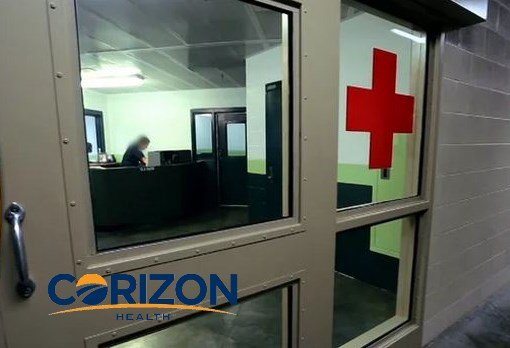

It’s that time of year when I look for my name on the list of MacArthur Fellows, and not finding it once again resolve to keep working and wait until next time. But truly, perusing such a list is as humbling as it is inspiring.
From puppeteers and choreographers to novelists, set designers, economists, chemists, sociologists, journalists, educators, environmentalists and community leaders, the MacArthurs each year offer a who’s who of the best and the brightest, making us feel optimistic about the capabilities of the human mind and spirit.
“These 24 delightfully diverse MacArthur Fellows,” as MacArthur President Julia Stasch states, “are shedding light and making progress on critical issues, pushing the boundaries of their fields, and improving our world in imaginative, unexpected ways.”
And what’s especially unique about the MacArthur Genius grant, as stated on the foundation’s website, is that “the fellowship is not a reward for past accomplishment,
» Read more about: Geniuses Among Us – the MacArthur Foundation Class of 2015 »


Last week, the Center for Media and Democracy (CMD) released striking data about the rapid turnover of charter schools. CMD’s state-by-state list of closed charters shows that, since 2000, these schools have failed at a much higher rate than traditional public schools. And over this time, millions of federal dollars went to groups planning to start charter schools that never even opened.
Instead of giving children the ‘disruption’ of a school closure, we should do everything we can to give every child access to a great school.
Earlier this month, teachers and school staff in Seattle did just that. After a five-day strike, they won a better education for students at traditional public schools across the city. Elementary school students now have guaranteed daily recess, which many parents had wanted, and special education teachers will teach smaller, more individualized classes.


“How do you spell your name?” asked the beltway woman staring at her laptop in the lobby of a lavish Southern California resort. Was she Googling me? I tried not to panic. Instead, playing up the jetlag, I quipped that I really did know my name by heart and gave her one of my business cards that said I was a consultant. Then I realized she was typing my name to put on my badge. Casually she handed me my lanyard, schedule and swag bag.
I was in!
Why are reporters barred from attending the Community Financial Services Association of America (CFSA) annual conference? Why all the secrecy? The organization says full disclosure and transparency are part of their best practices – but no media or streaming are allowed at its annual shindig. This is a $46 billion dollar industry based on subprime (they now call it nonprime) customers —
» Read more about: Payday Lenders: 'We're Not Bottom Feeders!' »


 There now is a flow of fresh cultural monuments in Los Angeles that runs from the High School of the Arts over to Disney Hall. This includes, of course, the 36-year-old Museum of Contemporary Art, with which billionaire philanthropist Eli Broad was once deeply involved, and which Broad’s new art museum now competes with. All of a 30-year sudden, we have a cultural downtown center, complete with a hinterland of new bars, stores, costly restos and so on.
There now is a flow of fresh cultural monuments in Los Angeles that runs from the High School of the Arts over to Disney Hall. This includes, of course, the 36-year-old Museum of Contemporary Art, with which billionaire philanthropist Eli Broad was once deeply involved, and which Broad’s new art museum now competes with. All of a 30-year sudden, we have a cultural downtown center, complete with a hinterland of new bars, stores, costly restos and so on.
Little is left of the downtown of 40 years ago – or of its scruffy arts bohemia. But that is the way of these things: Yupster egg joints are replacing the old Grand Central Market stalls that sold fruit for 20 cents a pound, new buildings arise on former parking lots where dead people sometimes turned up in the cars of those who worked overnight nearby.
The Broad museum (it’s officially called “The Broad”) looks like a mammoth white-enameled Claes Oldenburg version of a Sur La Table cheese grater.


 Sometimes religious people tend to be slower to adapt to changes coursing through the culture, especially with concerns about human-caused climate change. Even though polling shows Catholics, for example, to be slightly ahead of the national curve of global warming awareness, further inspection reveals that only 53 percent of white Catholics think climate change is a critical or major problem, although 73 percent of Hispanic Catholics do. These figures were measured a year ago, but there are signs that most church members aren’t even aware of the Pope’s environmental Encyclical, released this past June.
Sometimes religious people tend to be slower to adapt to changes coursing through the culture, especially with concerns about human-caused climate change. Even though polling shows Catholics, for example, to be slightly ahead of the national curve of global warming awareness, further inspection reveals that only 53 percent of white Catholics think climate change is a critical or major problem, although 73 percent of Hispanic Catholics do. These figures were measured a year ago, but there are signs that most church members aren’t even aware of the Pope’s environmental Encyclical, released this past June.
Those figures still fall short of the nation as a whole. Some 91 percent of Democrats, 78 percent of independents and even 51 percent of Republicans think the government should be doing more about climate change. One would think that’s too awesome a majority for a deadlocked Congress to ignore.


Two court orders and the most expensive wrongful death settlement in California history should be enough. But not for Corizon, a corrections health care company owned by a private equity firm.
For seven months earlier this year, Mario Martinez, a prisoner in Corizon’s care at the Dublin, California Santa Rita Jail, suffered from asthma that kept getting worse. A judge issued two court orders requiring the company to provide Mario urgently needed surgery, but they didn’t operate. While Mario suffered, Corizon even settled a lawsuit for $8.3 million with the family of a prisoner who, five years earlier at the same jail, had died in the company’s care.
In July, Mario suffered an asthma attack, collapsed in his cell and died.
Mario’s mother, Tanti Martinez, had hoped to bring her son’s story to Pope Francis, who on Sunday visited a Philadelphia jail that also contracts with Corizon.
» Read more about: Cruel and Unusual Punishment: Private Correctional Health Care »


History may record the August 2014 sale of the Villa Carlotta in Hollywood’s Franklin Village neighborhood as the moment in time when the legendary ‘Grande Dame’ became a statistic.
The 1926 apartment building was famously a stop along the path through Hollywood for numerous actors, musicians and other artists, but it has also been a home to those like eighty-three year old Sam Fuller, who lived there for 40 years. He and many other long-term residents who had hoped to live at the Carlotta for the rest of their lives received eviction notices just before Christmas last year.
“We were [being evicted and then] atomic-bombed—Ellis-Acted,” said Sylvie Shain, one of the few remaining residents, referring to a 1985 state law that allows landlords to evict tenants from their rent-controlled units if they are changed to non-rental use.
The Villa’s new owners, CGI Strategies, are attempting to use the Ellis Act to convert the 50-unit rent-controlled complex into a luxury hotel for extended stay tenants.
» Read more about: Villa Carlotta’s Tenant Warriors Fight to Save Homes and History »


He’s been a pope of many firsts already. The first to invite Catholics to forgive women who have had abortions, and the first to refrain from judging gay people to cite just two that have made headlines. But he’s also arguably the first pope to press hard against not just the reality of poverty, but the culpability of the economic system that is in large part driving it. He’s vocal about immigration. It’s as if Pope Francis is the first pope who is actually listening, and that makes him relevant in a way his predecessors simply were not.
He’s also about to be the first pope to ever speak before Congress. We can only hope they’ll listen. Since nearly a third of them are Catholics, I think many of them will. In fact, there are more Catholics in Washington these days than ever. Six of the 9 Supreme Court Justices are Catholics,
» Read more about: The Listener: Pope Francis Sets a Different Course »


“We’re not here because Mr. Kaplan helped us do better on standardized tests,” said one of the nearly one thousand students, former students, teachers, and friends gathered Sunday in the auditorium of Hamilton High School on Robertson to honor the beloved teacher Alan Kaplan who died August 29th.
Mr. Kaplan taught history and psychology in Hamilton’s Humanities Magnet program for 33 years. Through his teaching Kaplan was determined to do something about the achievement gap between white students and students of color. “He was devoted to helping students understand the process, the psychology and the history of racism in our country, believing it would be therapeutic,” said a colleague. Using “The Peoples’ History of the United States” by Howard Zinn as his history text, Kaplan’s lesson plans connected students to what was happening beyond the school walls. “He opened up the world to us” was how a former student,
» Read more about: "Don’t Believe Everything You Think." Remembering Teacher Alan Kaplan »


Twenty-six-year-old Takele Gobena is part of the “on-demand” economy, working full-time as a driver for Uber and part time for Lyft. The Ethiopian immigrant quit his job at the Seattle-Tacoma International Airport and purchased a new car to drive for the ride-hailing firms, believing it would make him a better provider for his one-year-old daughter. Instead, Gobena now finds himself in debt and, after expenses, making well below minimum wage. But because Uber and Lyft drivers are classified as independent contractors, Gobena is not protected by minimum wage laws.
Gobena’s plight is an increasingly familiar one. A new report from the National Employment Law Project, “Rights on Demand: Ensuring Workplace Standards and Worker Security In the On-Demand Economy,” highlights the problems so many on-demand workers face: “Characterizing workers as non-employees has serious negative consequences for them: non-employees have no statutory right to minimum wage, overtime pay,